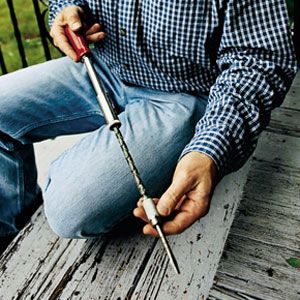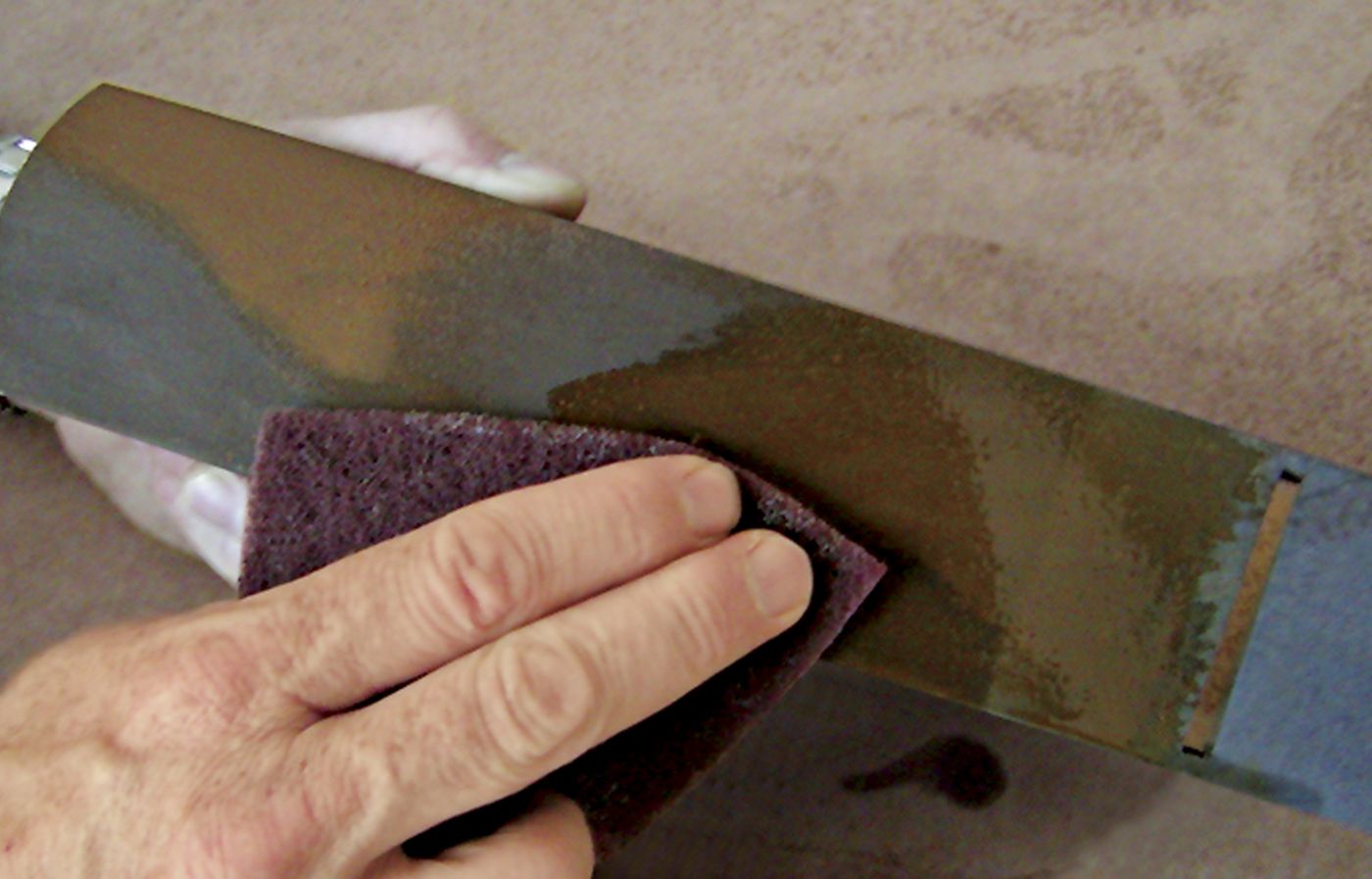The tools in your toolbox can rust and corrode over time, but that doesn’t mean you have to toss them. You can very easily clean your screwdrivers with a few simple tools and some gentle cleaning solutions. Read how to clean flathead screwdrivers, Phillips Head screwdrivers, and more types in our step-by-step guide below.
Types of Screwdrivers and Their Cleaning Needs
When screwdrivers accumulate dirt, grime, or rust, they can slip more easily, damage screws, or cause injury. Cleaning your tools helps to prevent this, and allows the tools to perform more successfully. It can also save you money.
Different types of screwdrivers might require different approaches to cleaning. Read more about how to approach cleaning different types of screwdrivers below.
Flathead Screwdrivers
Flathead screwdrivers feature simple, straight blades, and are among the most common types of screwdrivers. They’re easy to use and clean, but can accumulate dirt in the corners where the blade meets the shaft. Pay special attention to these areas when you’re cleaning, and use a small brush or cloth to remove debris.
Phillips Head Screwdrivers
Phillips head screwdrivers have a cross-shaped tip that can trap dirt and small metal shavings in their grooves. When you’re cleaning these screwdrivers, use a pointed tool or a small wire brush to carefully remove debris from the cross pattern. Be gentle to avoid damaging the tip’s shape, which is an important part of its function.
Specialty Screwdrivers
Specialty screwdrivers, such as Torx or hex drivers, feature more intricate tip designs. These can be more challenging to clean because of their complex shapes. Use compressed air to blow out debris, then clean with a small brush. If you’re cleaning precision screwdrivers for electronics, take extra care to avoid damaging the delicate tips.
Essential Cleaning Supplies for Screwdrivers
You’ll need a few key supplies to effectively clean your screwdrivers. Gather soft cloths, an old toothbrush or small wire brush, mild dish soap, warm water, and a rust remover. Have a degreaser on hand to tackle stubborn grime. A penetrating lubricant such as WD-40 can be useful for cleaning and protecting your tools.
Keep some fine-grit sandpaper or steel wool nearby to clean light rust, and use a rust inhibitor spray to prevent additional buildup. If your tools have wooden handles, you might need wood cleaner and linseed oil.

Step-by-Step Guide to Cleaning Screwdrivers
Follow the steps below to clean and maintain your tools.
Removing Loose Dirt and Debris
Start by wiping down the screwdriver with a dry cloth to remove any loose dirt. If you’re tackling more stubborn debris, scrub the surface with a soft-bristled brush or an old toothbrush. Pay special attention to the tip and any crevices. If the screwdriver is particularly dirty, you can use compressed air to blow out hard-to-reach areas.
Tackling Stubborn Grime
Create a solution of warm water and mild dish soap to handle especially tough grime. Dip a cloth or soft brush into this solution and clean the screwdriver. Focus on areas in which dirt has built up. If the grease or grime is especially stubborn, you may need to use a degreaser. Apply it carefully, follow the product’s instructions, and rinse afterward.
Addressing Rust Issues
If your screwdriver has developed rust, you can use steel wool to gently remove it. If you’re handling more severe cases, apply a rust remover according to the product’s instructions. Spray lightly rusted surfaces with a penetrating lubricant such as WD-40, then scrub with a heavy-duty Scotch-Brite pad. Stay away from sandpaper, as it scratches metal. After you remove the rust, dry the screwdriver and apply a rust inhibitor to prevent future corrosion.
Preventing Screwdriver Rust and Corrosion
Preventing rust and corrosion is frequently easier than having to clean it later. Consider the preventative measures below, which can extend the life of your screwdriver.
Proper Storage Techniques
Storing your screwdrivers correctly will help you to prevent rust and corrosion. Keep them in a dry place, such as a drawer or a toolbox. Add a canister of silica gel or vapor corrosion inhibitor strips to your toolbox for extra protection.
If your workshop is damp, run a dehumidifier to help maintain a dry environment. Store tools in their original wooden boxes to help absorb moisture and protect against humidity.
Applying Protective Coatings
Apply a protective coating after you clean your screwdrivers for an extra layer of defense against rust and corrosion. A light coat of machine oil or a specialized tool protectant can create a barrier against moisture. Consider using a rust inhibitor spray such as Boeshield T-9, which leaves a thin, waxy film on the surface.
Wipe off any excess oil or protectant to prevent it from transferring to your work materials. Reapply these protective coatings periodically, especially after heavy use or exposure to moisture.
Maintaining a Screwdriver’s Wooden Handle
Screwdrivers with wooden handles require special care. Consider the tips below.
Cleaning Wooden Handles
Start by wiping down wooden handles with a slightly damp cloth to remove surface dirt. Use a mild wood cleaner or a solution of warm water and gentle soap for a more thorough clean. Avoid soaking the wood, as excessive moisture can cause swelling or cracking. After you’re done cleaning, dry the handle with a clean cloth.
Once the tool is clean and dry, apply a small amount of linseed oil or another suitable wood conditioner. This helps to nourish the wood, prevents drying and cracking, and maintains the tool’s natural luster. Allow the oil to soak in, then wipe off any excess with a clean cloth.
Repairing Cracked Handles
Address any cracks you notice in your wooden handles immediately to prevent further damage. Wood glue is often the best choice for repairing cracks. Gently clean the affected area with a toothbrush to remove any dirt. Apply a thin layer of wood glue to both sides of the crack, then clamp the pieces together. Wipe away any excess glue with a damp cloth. Allow the glue to dry completely before you use the screwdriver again.
When To Replace Your Screwdriver
Maintenance can extend the life of your screwdriver, but you may eventually need to replace the tool. Look for signs of wear, such as a rounded or chipped tip, which can lead to slipping and potential damage to screws or work surfaces. If the handle is cracked beyond repair or the shaft is bent, it’s time for a replacement.
Replacement is frequently the best option for screwdrivers with significant rust, or those that no longer fit snugly into screw heads.
Using damaged or worn-out screwdrivers can be dangerous and may damage your work. When in doubt, it’s better to replace a questionable tool than to risk injury or poor workmanship.
Tips for Keeping Your Screwdrivers in Top Condition
Establish a routine for inspecting and cleaning your screwdrivers. Quickly wipe down the tool after each use to remove any debris. Set aside time monthly or quarterly for a more thorough cleaning and inspection. Check for any signs of wear, rust, or damage that might require attention.
Apply protective coatings or oils as part of your maintenance routine. This keeps your tools clean and allows you to catch and address any issues early.
Proper Usage Techniques
Using your screwdrivers correctly can significantly reduce wear and tear. Always use the appropriate size and type of screwdriver for the job. Forcing a screwdriver that’s too small or large for a screw can damage the tool and the fastener.
Avoid using screwdrivers as pry bars or chisels, as this can damage the tip and cause injury. When you’re working with power tools, avoid over-tightening screws, which can strip the screw head or damage the screwdriver tip.

